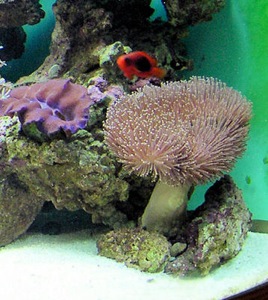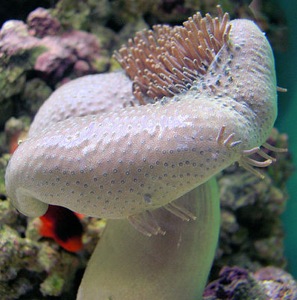Why and how Leather Corals Shed

Some Leather or Family Alcyoniidae corals periodically slough-off a thin top layer of tissue. This shedding process is apparently not a regenerative action, but one that serves to rid the coral’s surface of accumulated waste, debris and algae. Once a coral has shed what could be described as a layer of “old skin”, it’s not unusual for it to appear larger and more magnificent than before.
Why and How Leather Corals Shed

Sarcophyton, Lobophytum and Sinularia species leather corals are those that regularly go through this shedding process, as shown in this sequence of Toadstool Mushroom Leather Coral pictures.
By using the Tridacna crocea Clam in this first picture as a gauge, you can get a general idea of the width and height of the coral before it shed.
The First Phase of Shedding

This is the Toadstool Mushroom Leather Coral several days after performing a simple cleaning procedure of the substrate in a tank. It was determined that due to the amount of fine sediment that was suspended in the water from stirring up the sand, and periodically blowing water over the coral with a powerhead to remove any debris that settled on top of it, this caused the coral to respond and go into the shedding mode.
In the first phase of shedding, the coral closes up and shrinks, and the surface takes on a waxy appearance. The coral remained in this state for several days before it actually starts to shed.
The Second Phase of Shedding
In the second phase of shedding, here you can clearly see a thin, slimy-like membrane peeling away from the surface of the Toadstool Mushroom Leather Coral. In the area where sloughing already occurred, the coral’s polyps have started to come out again.
The Second Phase of Shedding Continues
In this picture the Leather Coral continued to shed its outer layer, you can see how the area of shedding widened by looking at where more polyps had emerged.
The Coral continued sloughing until it had completely rid its top surface of “old skin”.


